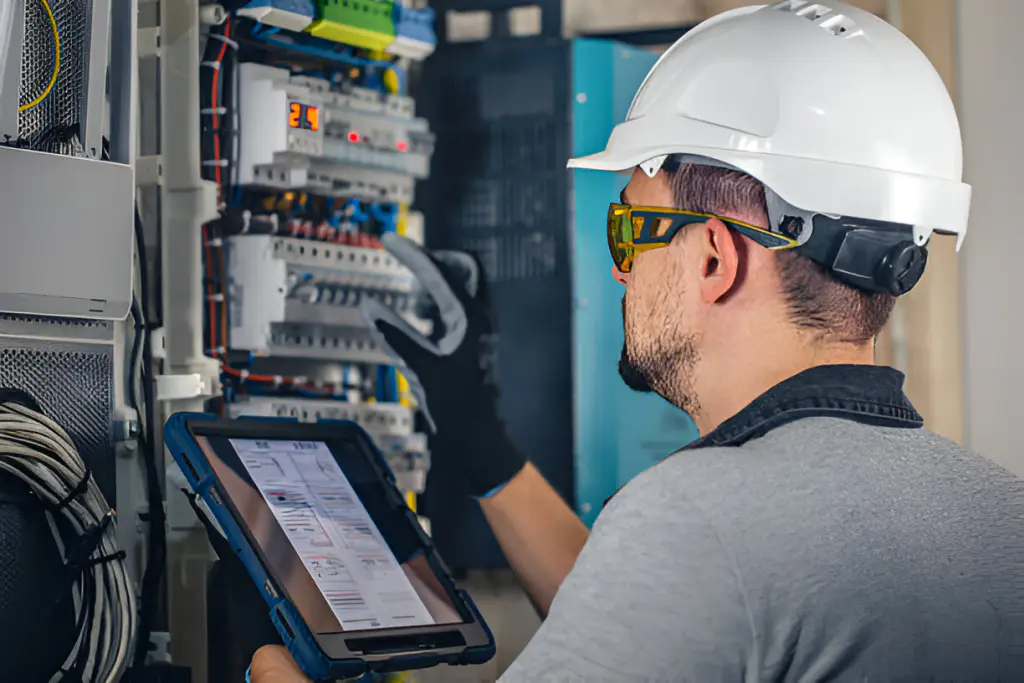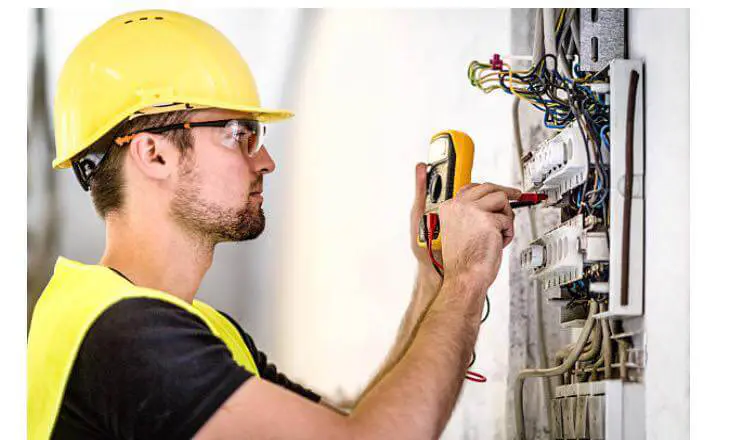Understanding the significance of EICR codes is crucial for maintaining electrical safety and compliance within any property. Each code, from C1 to FI, not only highlights the severity of an issue but also dictates the urgency with which remedial actions should be taken. For instance, a C1 code could potentially avert catastrophic outcomes by prompting immediate repairs. However, the implications of these codes extend beyond immediate safety.
They play a pivotal role in long-term property management and insurance considerations. What often goes overlooked, though, is how these codes might influence legal responsibilities and the subtleties of ensuring compliance. What might the broader implications be for property owners and managers, Let’s understand What Does EICR Code Mean?
EICR Codes Explanation
Electrical Installation Condition Reports (EICR) utilize specific codes to categorize the urgency and nature of issues found during inspections. These codes are fundamental to understanding the state of an electrical system and ensuring electrical safety compliance. The EICR codes C1, C2, and C3, along with Further Investigation (FI), serve as a structured protocol to assess and communicate the integrity of electrical installations.

Code C2, for example, signifies potential dangers that require urgent attention but do not pose an immediate threat. It indicates scenarios where the safety mechanisms may not be entirely reliable, such as a lack of adequate earthing or bonding. This code compels property owners to arrange remedial actions promptly to avert possible escalation into more severe hazards.
Code C3 is utilized when the installation does not fully comply with current electrical standards but does not pose a direct risk at the moment. Addressing C3 recommendations is about enhancing overall electrical safety and system reliability, thereby preventing future problems that could arise from outdated or substandard installations.
Understanding and addressing these EICR codes, within the stipulated compliance frameworks, is crucial for maintaining property safety and averting potential legal repercussions associated with electrical failures.
Immediate Action Required
Understanding the significance of EICR codes, especially C1 and C2, necessitates prompt and decisive action to mitigate risks and ensure compliance with safety standards. These codes are not just indicators but urgent calls for immediate remedial measures to address serious electrical hazards that pose direct threats to safety. The assignment of a C1 or C2 code during an Electrical Installation Condition Report (EICR) identifies conditions that require urgent repairs to prevent potential harm or damage.
Here is a breakdown of actions associated with each code:
| EICR Code | Required Action |
|---|---|
| C1 | Immediate action to eliminate direct danger. |
| C2 | Urgent action to prevent potential danger. |
| C3 | Improvement recommended; not urgent. |
| FI | Further investigation is required promptly. |
For C1 and C2 codes, the response must be swift. C1 conditions are especially critical as they signify an existing danger needing immediate resolution to prevent injuries or worse. C2, while slightly less immediate, also calls for quick action to rectify issues that could soon become hazardous. Ignoring these warnings can lead to significant safety risks, legal repercussions, and potential system failures. Hence, understanding and addressing these issues promptly is paramount for safety and compliance.
Potential Dangers Identified
Identifying potential dangers during an EICR assessment is crucial for preventing future electrical failures and ensuring user safety. The process involves a meticulous risk assessment to discern issues that could escalate into significant hazards if left unaddressed. For example, a C2 code may be assigned for lack of reliable earthing, a condition that potentially jeopardizes the entire electrical system’s safety, making urgent remedial action imperative.

Safety measures during the EICR include the evaluation of all electrical systems and components to ensure they meet strict regulatory standards. This thorough inspection identifies not only immediate risks but also less apparent vulnerabilities that could develop into future problems.
For instance, the detection of aged or deteriorating insulation on wiring, which could lead to short circuits or fires, is a critical focus area.
The EICR’s structured approach ensures a comprehensive coverage of all potential electrical faults. Each identified issue is categorized by its severity, guiding the prioritization of repair works.
This systematic categorization helps in strategizing interventions that effectively mitigate risks, ensuring a high level of safety and compliance with national electrical standards. Such proactive risk management is essential in maintaining a safe and functional electrical infrastructure.
Recommendations for Improvements
Recommendations for improvements in electrical systems are pivotal for enhancing safety and ensuring compliance with regulatory standards. When an EICR identifies C3 codes, it signals the need for upgrades or replacements to meet current electrical standards.
These recommendations, while not immediately hazardous, are crucial for preemptive safety enhancements and compliance assurance.
Implementing these safety upgrades involves rectifying outdated wiring systems, enhancing circuit protection, and installing modern, compliant devices. Such measures not only ensure an environment free from electrical risks but also align with the latest safety protocols mandated by industry standards.
For instance, replacing old fuse boxes with residual-current devices (RCDs) greatly reduces the risk of electric shock and fire hazards.
Additionally, ensuring that all electrical installations are properly grounded and that protective devices are correctly rated and installed can prevent potential dangers.
These actions are integral to maintaining electrical compliance and safeguarding the integrity of the property’s electrical infrastructure.
Further Investigation and Compliance
Further investigation (FI) codes are crucial components of the Electrical Installation Condition Report (EICR), serving as indicators that certain aspects of an electrical installation require closer examination to ensure compliance with safety standards.
When an FI code is identified, it triggers a detailed investigation process, essential for maintaining the integrity and safety of electrical systems. These codes help in pinpointing areas that might not immediately present a hazard but could potentially lead to safety issues if not addressed.
The investigation process typically involves:
- Detailed Examination: A deeper look into the installation to understand the root cause of the FI code.
- Testing and Analysis: Conducting specific tests to assess the condition and compliance of components not meeting initial inspection criteria.
- Documentation: Updating the EICR with findings, providing a clear path to compliance.
This approach ensures that installations not only meet current regulatory compliance standards but also uphold safety, thereby minimizing risks.
Addressing FI codes effectively requires a thorough understanding of both the installation’s immediate conditions and its potential future risks. Through this meticulous process, electrical professionals ensure that every aspect of an installation aligns with stringent safety and compliance standards.
EICR Validity and Frequency
Understanding the frequency and validity of an Electrical Installation Condition Report (EICR) is fundamental to ensuring ongoing compliance and electrical safety. The EICR certification process mandates a meticulous examination of electrical systems to ascertain their condition and safety. Typically, an EICR remains valid for up to five years; however, this duration may vary depending on the specific circumstances and conditions of the electrical installations assessed.
EICR inspection intervals are crucial for maintaining electrical safety standards and compliance with regulatory requirements. For residential properties, it is generally recommended that inspections be conducted every ten years or with each change of occupancy.
For commercial properties, the recommended interval is every five years. High-risk environments, such as industrial settings or places with public access, may require more frequent inspections, potentially every three years or less, depending on the operational hazards and wear on the electrical system.
The precise interval and necessity for more frequent assessments are determined by factors like the age of the installation, its usage, and environmental influences. These factors can accelerate wear and degradation, necessitating shorter intervals between inspections to preempt potential electrical failures and ensure safety and compliance.
Contact and Service Information
Ensuring swift and accurate communication, our dedicated team is available for consultations and service arrangements regarding EICR testing and compliance.

Recognizing the importance of compliance and the benefits it offers, we ensure that each interaction is not only informative but also conducive to achieving and maintaining high standards in electrical safety.
To facilitate this, we provide:
- Direct Contact Channels: Reach out via email or phone to discuss your EICR requirements with our expert team.
- Expert Guidance: Our specialists offer precise advice on compliance issues and the implications of EICR codes.
- Scheduled Services: Book testing and compliance reviews at times that suit your operational needs, ensuring minimal disruption.
Our technical expertise allows us to address complex compliance matters effectively, promoting a proactive approach towards electrical safety.
The significance of EICR testing cannot be overstated, as it directly impacts the operational safety and legal standing of your facilities.
Conclusion
In conclusion, Electrical Installation Condition Report (EICR) codes serve as essential tools for identifying and categorizing electrical issues within installations. Codes such as C1, C2, C3, and FI prioritize actions ranging from urgent interventions to recommendations for compliance improvements. Regular adherence to these classifications enhances safety, mitigates potential hazards, and ensures regulatory compliance. Establishing a routine for EICR assessments is imperative for maintaining the integrity and safety of electrical systems in any establishment.









